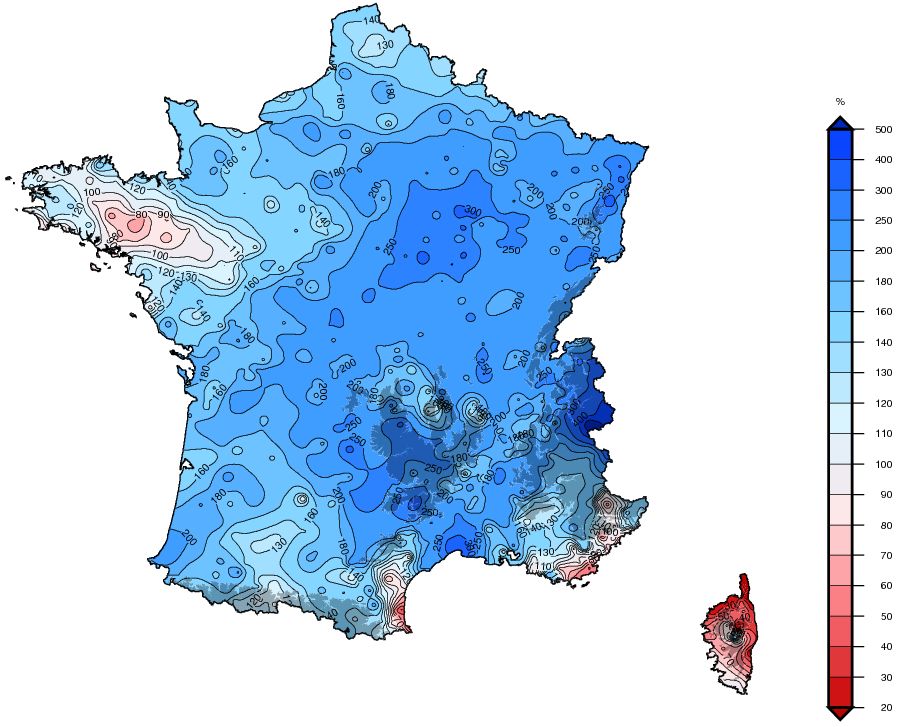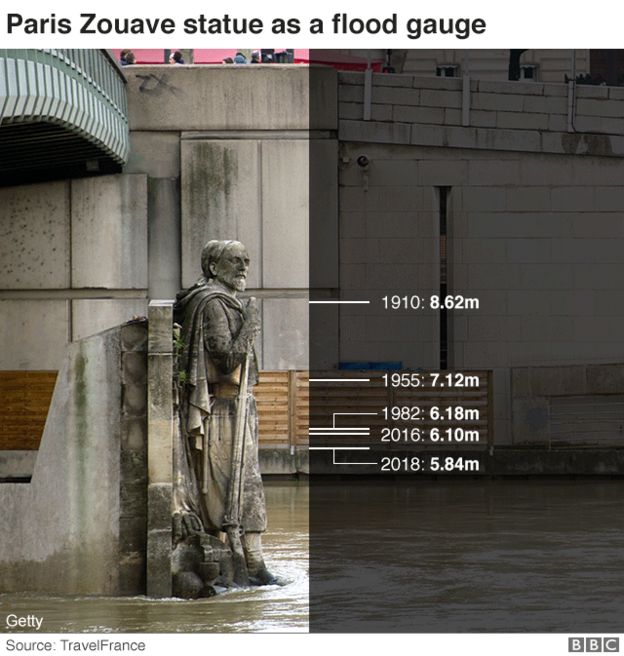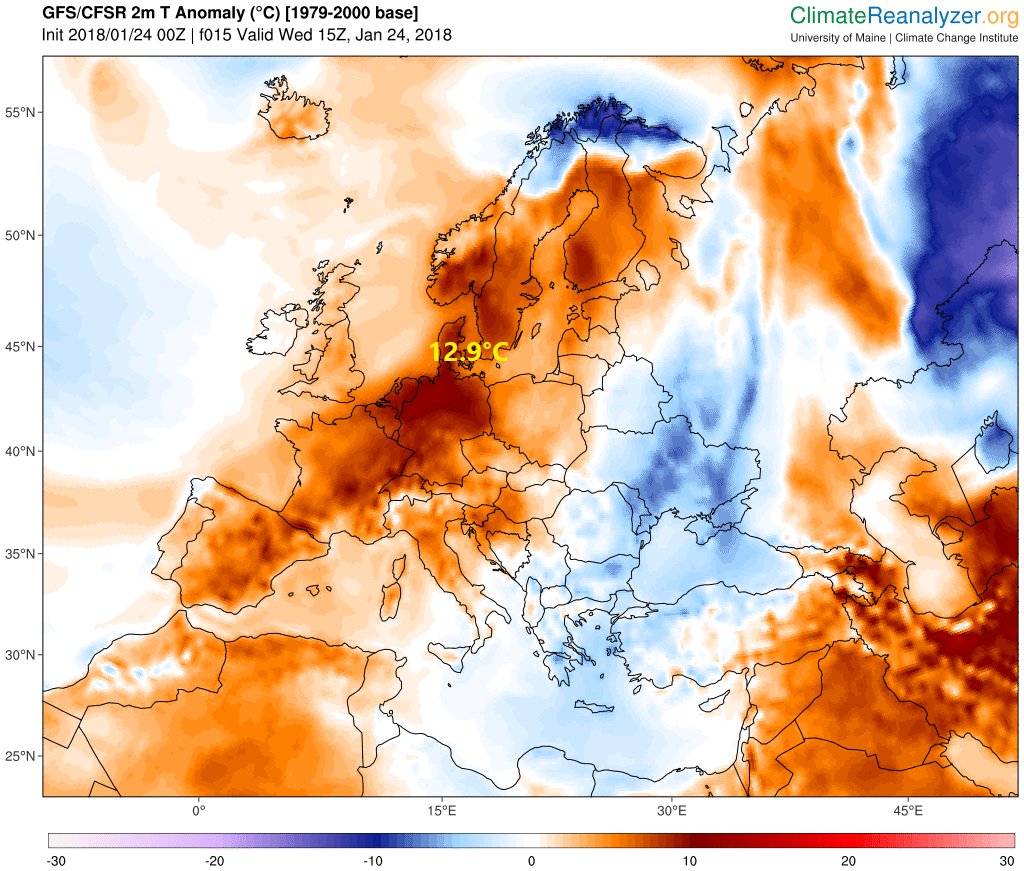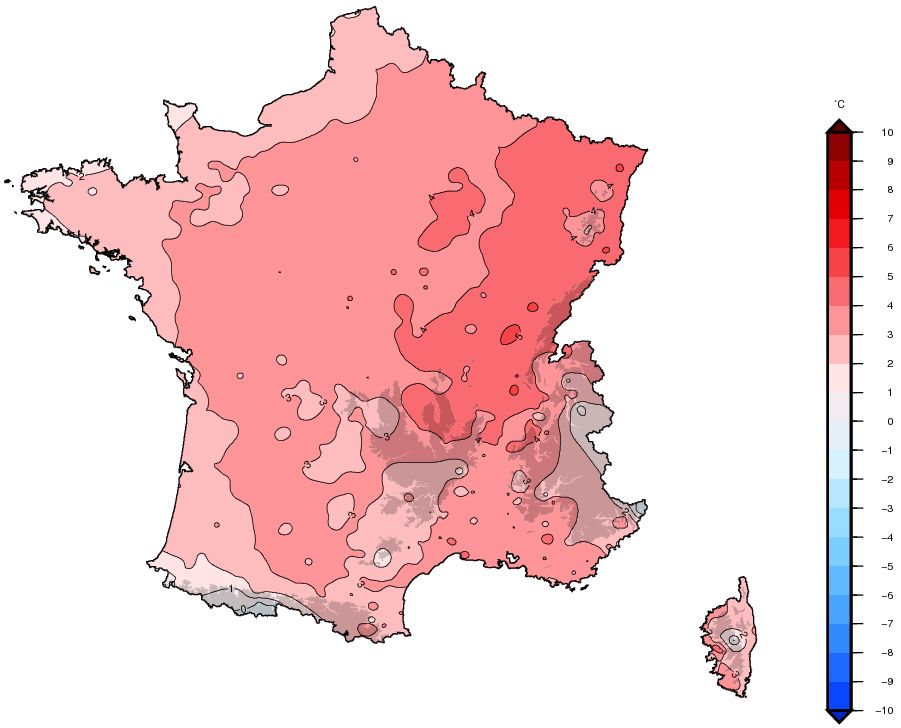Flooding in north-west Europe
Sentinel-1 CSAR IW acquired on 20 December 2017 from 17:07:14 to 17:08:04 UTC
...
Sentinel-1 CSAR IW acquired on 31 January 2018 at 17:56:30 UTC
Sentinel-1 CSAR IW acquired on 01 February 2018 from 05:50:02 to 05:51:42 UTC
...
Sentinel-1 CSAR IW acquired on 31 January 2018 at 17:56:30 UTC
Sentinel-1 CSAR IW acquired on 01 February 2018 from 05:50:02 to 05:51:42 UTC
Keyword(s): Land, disaster, emergency, climate change, hydrology, water, river bed, flooding, urban planning, France, Germany, Netherlands
Bob Henson from Weather Underground wrote: "This winter’s floods have been fed by enormous January rains around and upstream from Paris, with heavy snows across the French Alps. As reported by Pam Wright at weather.com, Paris racked up 183 mm (7.20”) of rain for the period Dec. 1–Jan. 21, twice the long-term average for the period and second only to the 213 mm (8.36”) recorded in 1935-36. Further up the Seine watershed, Langres had already broken its all-time January rainfall record as of Jan. 21 with 199 mm (7.83"), beating 184.8 mm (7.28") from 1984."


Relative precipitation in France in January 2018 - source Météo-France.
Reminding the past record flood in 1910, he added:
"Flooding in Paris inevitably brings comparisons to the city’s 1910 disaster, when the Seine rose to 8.62 meters and some 22,000 buildings were flooded. A 2014 review by the Organisation for Economic Co-operation and Development (OECD) noted that a repeat of the 1910 Paris flood could affect up to 5 million people and cause up to 30 billion Euros (about $37 billion US) in damage. OECD released an update on Tuesday: “Action to prevent the risk of major flooding in Paris and the Ile de France region has improved in recent years – particularly after the Seine burst its banks in May and June 2016 – but urban and territorial planning needs to be better adapted, governance strengthened and long-term funding clarified.”"

Comparison of the floods that affected Paris since 1900 using Alma bridge's zouave, Paris usual flood jauge - source BBC.
The amount of water vapor that is needed to achieve saturation increases as the temperature increases. Record air temperatures measured in North-West Europe during January 2018 may be linked to the large amount of precipitations that fell over that part of Europe.
Weather Underground reminds record temperatures were reached in January 2018:
"Wednesday [24] was the mildest January day on record across parts of northern Europe. This includes the coastal German town of Cuxhaven, which reached 13.8°C (56.8°F). At Sønderborg, Denmark, a nationwide January heat record was set with 12.9°C (55.2°F), topping the nation’s old monthly record of 12.4°C (54.2°F) from 2005."
"Parts of western Europe now have a good shot at ending up with their warmest January on record. Geneva, Switzerland, has been running more than 1°C (1.8°F) above its previous record for the month as a whole, and France is likely to eclipse its monthly record set in 1936, 1988, and 2014 by as much as 0.3°C (0.5°F). Cannes, France, set a new monthly high on Jan. 4 with 22.9°C (73.2°F). With help from warm downslope winds, Jan. 22 saw the warmest daily lows ever recorded in January over parts of southern France, including 14.5°C (58.1°F) at Montpelier. All-time January highs were set on Monday in the Spanish cities of Valencia (26.6°C/79.9°F) and Barcelona (23.8°C/74.8°F)."


Left: Air temperature in Europe in January 2018; right: Air temperature absolute anomaly in France in January 2018 - sources left: Etienne Kapikian from Météo-France; right: Météo-France.
According to Bob Henson:
"At the same time that parts of the central and eastern U.S. suffered through their coldest holiday week on record, western Europe was smashing heat records. Both France and Germany had their warmest New Year’s Eve on record. An analysis by Michael Theusner (Klimahaus) showed that 183 of Germany’s 224 stations with at least 50 years of record had their warmest Dec. 31 on record. Leipzig-Holzhausen, where records began in 1863, beat its previous record-mild New Year’s Eve (1901) by 1.3°C with a high of 13.7°C (56.7°F)."

Relative sunshine duration in France in January 2018 - source Météo-France.
As expected, record rainfalls meant little sunshine hours as shown above. It was however much worse in eastern Europe as written in the Weather Underground article:
"December 2017 was the least sunny month since weather records have been kept in Moscow, Russia. The city managed to eke out a mere six minutes of sunshine for the entire month, beating the previous monthly scant-sun record of three hours, set in 2000. If skies are clear, Moscow can get up to seven hours a day of sunlight even in December, but last month was incredibly stingy: the city saw just 0.0005% of its potential sunshine for the month!"
While France bore the brunt of the flood, it also affected Belgium, Netherlands and Germany.


Fields overflooded by the Rhine near Grietherort - source Deutsche Welle (DW).
In France24, Mariëtte Le Roux reminded how global warming may lead to more people and goods affected by flooding:
"Flood damage from rivers in Europe will more than double to about 15 billion euros per year, even under the most optimistic planet-warming forecast, said a study published in the journal Climate
- In the best-case scenario, average warming is contained to 1.5°C, and the number of people affected by floods rises 86% to an estimated 650,000 per year, said the authors.
- In the dreaded scenario of a 3°C-warmer planet, projected flood damage for Europe shoots up 145% to about 17 billion euros per year, affecting some 780,000 people — a much largest increase of 123%.
- The world's nations committed in the Paris Agreement inked in 2015 to limit average global warming under 2°C — while aiming for an aspirational 1.5°C — over pre-Industrial Revolution levels.










